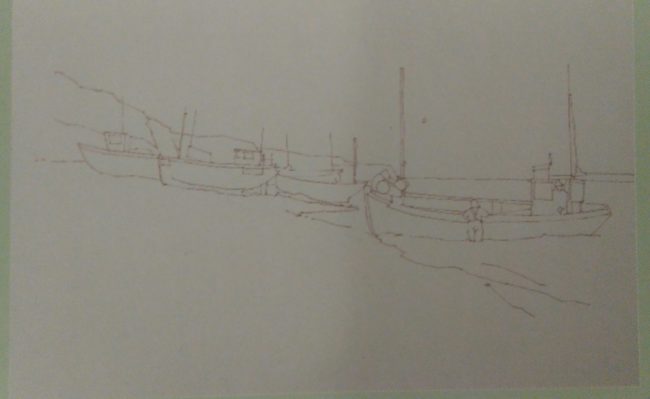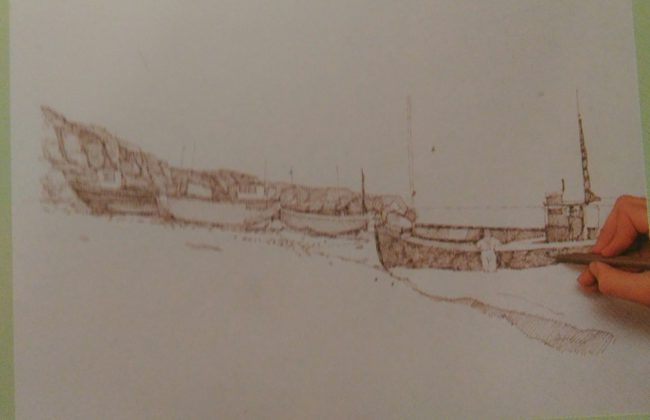Hatching and
Depending on the impression you want to achieve lines can be carefully drawn or just added to the paper with relaxed uneven moves. You can achieve so much different effects by simply changing the pressure of the pen on the paper or making different space between the lines.
The closer the lines are and the thicker they are the tone you get will be stronger. Since you do not cover the entire surface of the paper the tone maintains the luminescence which is one of the basic advantages of this technique.
Boats on the beach
To create this drawing you will need the following:
- One sheet of smooth natron paper
- Thin black marker pen number 0.2
- Hard H pencil
Sketching
Using the hard H pencil to sketch the main contours of the objects with very soft pale lines. When you are satisfied with the drawing use the marker to carefully go over all the lines.
Shade the rocks in the background with short horizontal, vertical and diagonal moves using
So shading the rocks in the background darker will make the ships in the front plane stand out and give your drawing a tridimensionality. The marker pen is perfect for


Building the composition
Start working on the three fishing boats in the background. Use light hatching moves for the lightest tones on the boats and then build the surfaces of darker tones using
With a long line of short vertical lines depict the peble beach. The dots and swift short moves will help you depict larger pebbles. Now work on the details of your drawing, drawing the boats and the rocks. Develop all the areas simultaneously rather than lingering on one specific part. That will help you with the balance on your drawing.
Fill the boat in the front plane by hatching and
To give a glimpse of water reflections around the boat overlap
Ad shade to the man figure leaning on the side of the boat with a few moves, emphasize the waves hitting the shore with relaxed
Draw the ropes on the boats in the backplane then work on the uneven surface of the beach with swift moves of the pen in different directions. Don’t add too many details to this part of your drawing leave it with many white areas so it would create a contrast to the boats with meticulously added details.

Finishing touches
Continue working on the beach emphasizing the shade with light moves of the marker pen over the areas you already sketched. Go back and work on the entire drawing. Ad details to fill the boats and cliffs using hatching and
In order to draw the sky properly, you need to use light moves and thinner lines then you did on the cliffs and the boats. Hold the marker pen on the middle part of it and use light swift moves on the paper to express the airy texture of the clouds.
When you finish carefully determining the shape of the clouds use hatching and
Ad finishing touches, cleansing the tone and contour where you feel a need to do so. This technique is demanding and you need to use a methodical approach in order to do it well but I think the outcome is worth all that effort. Finished drawing contains graphical simplicity and pleasant mixture of open space and carefully built surfaces.
This is one way of using





0 Comments